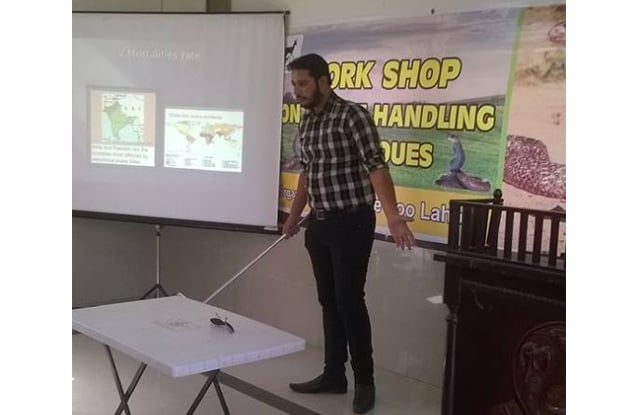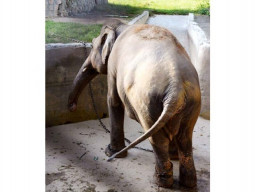
“Many doctors are not really cognistant of how to treat snakebite,” Zia Mughal of the University of Veterinary and Animal Sciences said on Saturday.
Mughal, who is a lecturer at the varsity’s pet centre, was speaking at an event organised by Lahore Zoo at Lawrence Garden to help Rescue-1122 and zoo officials understand how to handle serpents. He said most snakes found in Pakistan tended to be non-venomous. Mughal said most doctors elected to use anti-venom medicines despite this. He said anti-venom medicines should only be administered after due consideration. “Anti-venom medicines should only be administered in case of swelling, increasing discomfort and progressive pain,” Mughal said.
He said if a snakebite left a v-like pattern then it was likely to have originated from a non-venomous serpent. Mughal said saline drips should be used to dilute venom circulating in victims’ blood in emergency cases. The lecturer also shed light on various first aid techniques and showed pictures to explain how snakebites could be dealt with.
Adil Siddiqi of the UVAS Pet Centre elucidated on some of the myths commonly associated with snakes in popular culture. Speaking about how the reptiles were depicted in Bollywood movies, he said characters such as those of snakes hell bent on seeking revenge from humans were mere myths. Siddiqi said the cobra, infamous across Asia, was also found widely across the Indian subcontinent.
He said cases of snakebite were quite common across the region. Siddiqi said a proper record of its incidence was not available. He said only four species of venomous snakes were found across the country. Siddiqi said most serpents found in freshwater bodies were not venomous. “Even if a water snake is poisonous, its poisonous fangs are located at the back of its mouth. They have to literally chew their prey to activate the glands,” he said.
Speaking about why a large number of snakes were being found across homes according to Recue-1122, he said there were a variety of reasons behind this. Siddiqi said the fact that mice constituted a major component of their diet was a chief reason behind the occurrence. He said snakes often ended up in homes looking for them as they were commonly found their. Siddiqi said snakes also ventured into homes looking for places to hibernate in winter.
The Pet Centre official also showed those present the way to handle and capture a wild snake. He used a customised staff to grab a snake for the zoo by its head and guided it towards a jar. Siddiqi also held the serpent from the end of its tail and tapped it to ensure that it continued moving into the utensil. “One can also use a sack but snakes found in the wild are much more active and aggressive than this one,” he warned.
Siddiqi also stressed the importance of wearing adequate material before handling any snake. “Always stay at a distance and use a stick similar to a snake tong,” The instrument was later presented to Rescue-1122, which did not have such a staff in its inventory before.
Published in The Express Tribune, October 4th, 2015.



































COMMENTS (1)
Comments are moderated and generally will be posted if they are on-topic and not abusive.
For more information, please see our Comments FAQ